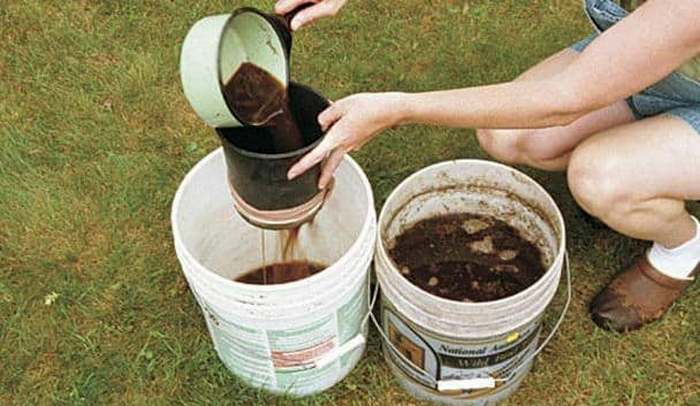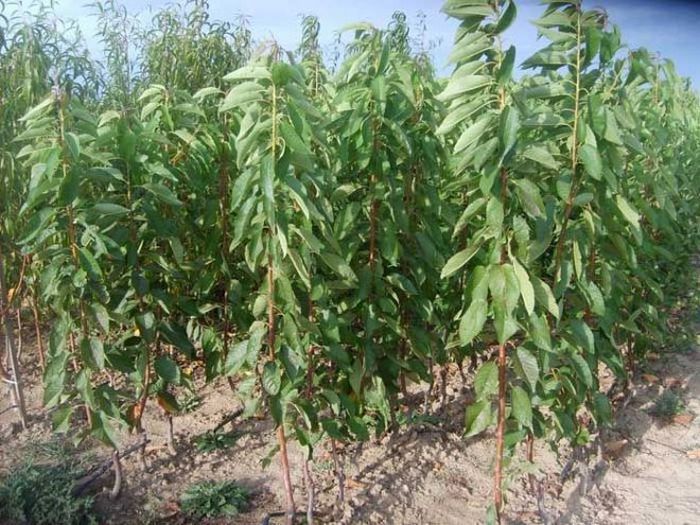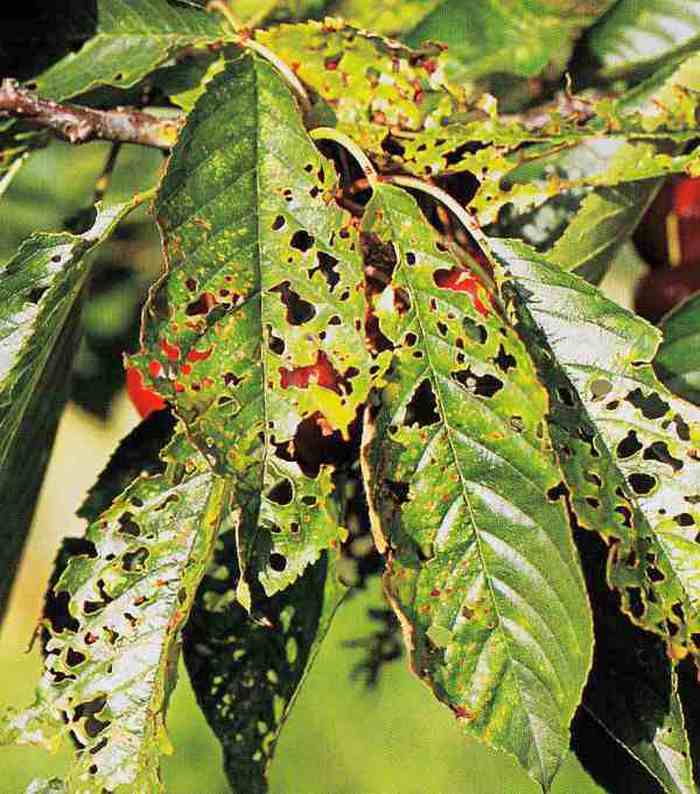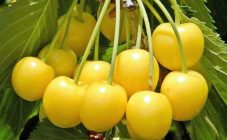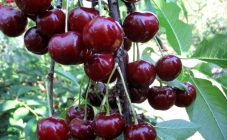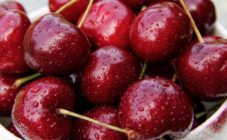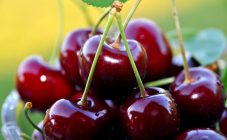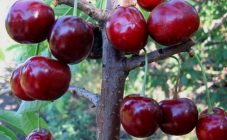Content:
Sweet cherry loves warmth and sun, so most of the varieties grow in the south of Russia. The Krasnodar Territory provides a large amount of sweet cherry harvest. Here it is grown industrially in gardens and small household plots. Sweet cherries in the Krasnodar Territory are found in almost every yard.
Garden cherry tree
There are several thousand varieties of sweet cherries, but breeders continue to develop new samples. The color of the berries in this culture can be:
- scarlet,
- pink,
- burgundy,
- burgundy brown
- yellow.
The size of the fruit reaches 2 cm in diameter; in wild trees it may be smaller. Cherry grows quickly, begins to bear fruit as early as 5 years after planting, but a good harvest can be obtained only in 9-10 years of plant life.
Cherry trees require the same care as cherries. The difference is that cherries grow in almost all regions of the country, while cherries bear fruit well only in areas with a warm climate. Where summers are short and cold, this culture is poorly accepted.
The necessary conditions
A sunny corner of the garden is allocated for a cherry seedling. This tree does not like shaded areas. In the shade, it will wither and bear poor fruit. Breeders recommend grafting thermophilic cherries on local varieties of cherries.
Sweet cherry grows poorly and bears fruit on depleted land, so 2 times a year you need to apply fertilizer to the root section of the soil. During the period of ovary formation, you can water the tree with liquid fertilizers infused with herbs and mullein.
In the Kuban, cherry and cherry trees are planted along the fence in a line. However, they can grow behind the yard and in the front garden in front of the house. In the Krasnodar Territory, fruit trees often grow on the streets of villages and cities. In the season, garden trees give a harvest, and after fruiting, on a hot day they shade the paths between the houses of the villagers. Heat-loving garden trees planted along the fences in the streets are well protected by buildings from wind gusts. Due to the large amount of this garden culture, sweet cherries in Krasnodar, when ripe, are in great demand due to the low price of berries.
When cherries ripen in the Krasnodar Territory
So when will sweet cherries ripen in Krasnodar? Gardens in this region begin to bloom every year with a slight difference in time. When spring starts very early, stone fruits can bloom in late March. But this early bloom is the exception rather than the rule. Cherries and sweet cherries bloom after apricots around mid-April.
The Kuban climate has undergone great changes in recent decades. For this region, return frosts have become normal and expected. In recent years, they appear during the flowering period of cherry orchards. For this reason, late flowering varieties are becoming popular among gardeners:
- Scarlet,
- Velvet,
- Krasnodar early.
Cherry varieties by maturity
So when does sweet cherry ripen in Krasnodar? The earliest varieties of sweet cherries give a harvest in the middle - end of May, and the later ripen in July:
- An early variety widespread in the Kuban, Dagestan, Rostov region Maiskaya (T-shirt) begins to ripen from 10 to 27 May.
- Simultaneously with Mike in the Kuban begins to ripen April... This early variety was created back in the 19th century, but entered into the state register only in 1947. It is recommended for cultivation in the Krasnodar Territory, the Lower Volga, Stavropol and Rostov regions. April berries are colored burgundy-black, they are very juicy and tasty.
- Berries ripen right after April The beauty of the Kuban... They are yellowish-cream colored with a pink barrel. It is considered a table variety, but experience shows it can be used for preservation for the winter. The tree is medium-sized, the crown is round. Fruiting indicators are average. Cherry Krasa Kubani has a high immunity to common infectious plant diseases.
- Behind the Beauty of Kuban, ripening of berries begins in the variety Ramon Oliva... The tree is short with thin hanging branches. It is considered one of the most promising and profitable varieties for industrial cultivation. The berries are large and tasty. The pulp is fleshy, juicy, colored dark red.
- Dybera black ripens in the Krasnodar Territory after June 20. The fruits are beautiful, very large. The taste of black-burgundy berries is sweet with a slight sourness, bright and memorable. This variety has been tested for decades, it was created more than 150 years ago and is still popular with gardeners for its unpretentiousness and excellent taste. Dyber gives the first fruits at the 5th year of the plant's life. An adult tree grows up to 6 m in height. The crown of the tree is oval, the branches are well leafy. The tree blooms with beautiful large flowers with corrugated petals. It is impossible to delay picking berries: as soon as the harvest is ripe, it must be removed from the branches, since the fruits quickly overripe and begin to fall off.
- A little later, Dybery cherry ripens Franz Joseph... This type of tree-like garden plant was bred by the Swedish breeder I.E. Prohe. The variety is ideal for industrial cultivation. It is highly resistant to infections and fungal diseases. Daibera has good cold resistance and can be grown in the Moscow region and the Middle lane. One tree can produce about 50 kg of fruit. The berries are very beautiful, yellow with one pinkish-red barrel. The pulp is juicy with a honey flavor. The berries can be transported over long distances.
Late varieties of cherries growing in the Kuban
To extend the timing of obtaining cherry berries, gardeners plant trees with different ripening periods. Among the late varieties, the most popular are:
- Exhibition. Ripens in late June - early July. It grows up to 5 m in height, the branches are well leafy. The berries are up to 2 cm in diameter and are yellowish-cream colored with one pink barrel. It tolerates return frosts well. The flesh of the fruit is tasty, juicy fleshy.
- Napoleon. Ripens in late June - early July. The tree grows up to 5 m in height. The shape of the crown is spherical. Large fruits are dark red and have a slightly elongated shape. Due to their dense skin, the berries are stored for a relatively long time and are suitable for transportation over long distances. They can be eaten fresh or used to make canned juices and compotes for the winter.
- Recordist. This tree-like plant has a well-leafy crown in the shape of a ball. The berries are very large in size, a bit like a heart. Painted in a deep black and red color. The pulp is fleshy, juicy and very tasty. The fruits are stored for a long time and can be transported over long distances. Berries of the Napoleon variety can be eaten fresh and used for making juices and compotes.
Diseases and pests
Some gardeners find it difficult to grow cherries. Indeed, this garden plant often dies before reaching the fruiting age. What is the reason? Sweet cherry is sick due to the fact that:
- the seedling was planted in an unfortunate place;
- this variety is not suitable for the region in which they are trying to grow it;
- there is a source of infection nearby, which, with gusts of wind, enters the fruit tree;
- the cherry is mechanically damaged (a large crack on the trunk, the main branches are split, etc.).
In order to reduce the risk of plant disease, you need to look for a cherry variety for the garden, adapted to the climate of the region where it will have to grow. Moreover, breeders breed fruit trees that have a stable immunity to infections common in certain climatic zones.
Often, material is taken from an infected tree for scion. As a result of the infection introduced into the garden, several trees may die.
Cherry tree infectious diseases:
- clasterosporium disease;
- fruit rot;
- brown rot;
- mosaic disease and mosaic ringing;
- verticillary wilting.
To protect the plants in the garden from diseases and pests, preventive treatments must be carried out throughout the season. For this, solutions of protective drugs are used. These can be purchased from a specialist store. Spraying is carried out every 20-30 days. If it rains after the trees have been processed, the procedure will have to be repeated again.
Pests are poisoned with general-purpose drugs. If several harmful insects of a certain type have been found in the garden, directed poisons are used.
As a result, it is worth noting that in the Krasnodar Territory it is easiest to grow many varieties of sweet cherries. It is not difficult if you follow the planting and grooming rules. And then the tree will give a large harvest for harvesting compotes and for sale.

